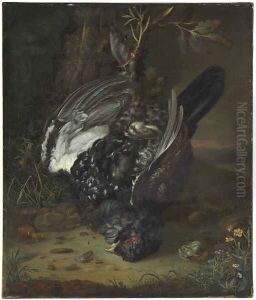Johann Friedrich Von Grooth Germany C Paintings
Johann Friedrich von Grooth, born in 1686, was a notable German painter whose contributions to the art world during the 18th century have been recognized for their historical and artistic value. Originating from Germany, Grooth was part of the Baroque movement, which was known for its exuberant approach to art, emphasizing detail, movement, and clarity in its compositions. His work, however, also hinted at the early inklings of the Rococo style that would follow, characterized by lighter themes, more fluid lines, and an often more playful approach to subject matter.
Grooth's early life was marked by his immersion in the thriving artistic culture of Germany, where he received his initial education. He was particularly known for his detailed landscapes and portraits, which not only captured the physical likeness of his subjects but also sought to encapsulate a deeper, more emotive character. This ability to convey emotion and narrative through his paintings set Grooth apart from many of his contemporaries.
Throughout his career, Johann Friedrich von Grooth traveled extensively across Europe, which greatly influenced his artistic style. His experiences in countries such as Italy and France allowed him to absorb and integrate various European artistic movements into his work, making his style quite eclectic. Despite his travels, Grooth remained deeply connected to his German roots, and this connection was evident in the thematic choices and stylistic approaches of his paintings.
Grooth's contributions to the art world were not limited to his paintings. He was also involved in the artistic community as a mentor and teacher, passing on his techniques and insights to a new generation of artists. His influence extended beyond his immediate circle, impacting the development of German art in the 18th century.
Johann Friedrich von Grooth passed away in 1765, leaving behind a legacy that was characterized by a blend of Baroque intensity and the emerging playfulness of the Rococo. His work continues to be studied and admired for its technical skill, emotional depth, and the unique perspective it offers on the transitional period of European art history he lived through.
